- Images (36)
- Links (0)
- Agenda

|
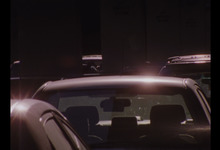
|

|

|
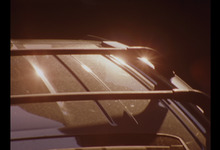
|
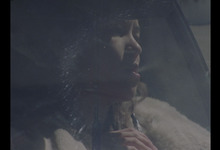
|
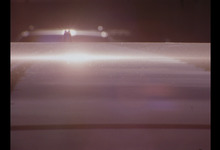
|

|

|

|

|

|

|

|

|

|

|

|

|

|

|

|

|

|

|

|

|
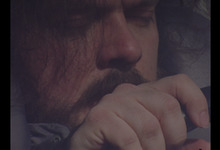
|
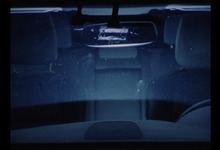
|

|
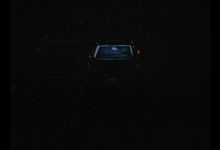
|
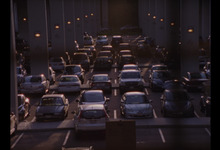
|

|
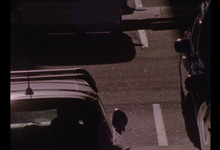
|
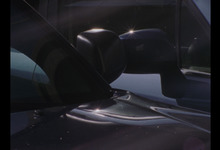
|
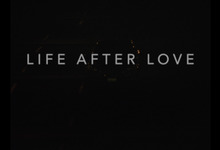
|
As part of the Scratch Focus series, where we highlight the work and the words of one of the many filmmakers in our collection, we are happy to share our recent interview with Zachary Epcar.
Having grown up in San Francisco and studied at Bard College, Epcar is an emerging experimental filmmaker in whose work a great variety of aesthetic influences, theoretical reflections and formal inventions meet and interact.
We invite you to watch his short film Life After Love (2018), which has been screened at various festivals including the New York Film Festival, IFF Rotterdam, Fracto (Berlin), 25 FPS (Zagreb), FCDEP (Paris), and Syros International Festival, and was awarded top prizes at Black Canvas Festival (Mexico) and Onion City Experimental Film & Video Festival (Chicago).
We spoke with Zachary to uncover the many layers of this film, as well as to gain a better understanding of the creative and intellectual processes that animate his filmmaking practice. Watch a few excerpts from the interview or read the full conversation below.
· How did you arrive to experimental film?
I grew up in San Francisco. I was always interested in making films. My first exposure to experimental cinema was at the San Francisco Art Institute, I took a 16mm filmmaking course there right after high school. We watched films by Maya Deren, Marie Menken, works from the post-war American avant-garde, and right after that I went to Bard College. I knew that I wanted to focus on film, so I was spending a lot of time in the film department and the community there. I was really fortunate to have the opportunity to work with my mentor Peter Hutton, and with Peggy Ahwesh and Jackie Goss, and Ed Halter. It was just a really vibrant community, and an environment that really supported experimental work outside of the traditional narrative framework. I eventually moved back to the Bay Area, and of course there is a great scene here, as well. I would go out to the San Francisco Cinematheque, Artists’ Television Access, and the Pacific Film Archive all the time and continue to immerse myself as I was developing my own practice. From a fairly young age I was focused on experimental cinema and knew that I was more excited by film as an art practice than any idea of entering into commercial cinema.
· That's surprising because your work seems to be on the threshold between so-called classical fiction and experimental film. Life After Love seems to be somewhere between David Cronenberg and Nathaniel Dorsky.
Both of those are big reference points for me! The influence of narrative cinema has been there from the beginning. I grew up on Hollywood cinema, and then, developing as a young artist meant being exposed to European arthouse films. I did go through the process of discovering, or getting “sidetracked” by experimental cinema, and at the same time I’m still a huge fan, viewer and student of narrative cinema, and it definitely informs my own work. A lot of the experimental films that I was most excited about early on were playing with and blurring the lines between the two. I was interested in exploring the history of the avant-garde in the Bay Area, filmmakers like Robert Nelson, Gunvor Nelson, Dorothy Wiley, and Mike Henderson, who were experimenting with form but had playful and irreverent approaches, both to the tropes of experimental cinema and to genre cinema and different ideas that were being smuggled in from narrative films.
· Your filming style, especially in Life After Love and Under the Heat Lamp an Opening, is also reminiscent of the work of Rob Todd, but I don’t know if there’s any connection?
I’m familiar with his work. I don’t know if it was a major influence, but it’s interesting that you point out those two films because in both I’m working in a kind of observational mode. They are both very focused on the location as a point of departure. They both started with just allowing myself time within the space, thinking about the light, the way that it’s changing over time, thinking about the architecture and the environment, the way that bodies are moving through and interacting with the space. There is an approach that I think is related to a practice like Rob Todd’s – and then going back into that material and finding these moments of intervention, of performance, fictionalizing or narrativizing the materials.
Thinking about the eye, the aesthetics of his work, I think there is a kind of skewed angle – looking at the familiar with a fresh or renewed perspective. The way I think about my work, in some part, is this kind of defamiliarizing, offering a surprise for the viewer encountering a familiar environment, and doing it from a skewed angle that is disorienting. In a lot of my work I am using reflective surfaces, mirrors, glass, as both objects and architectural elements, but also as distorting surfaces, a way of abstracting the space through an object that’s already embedded in that space. For me, that influence might be coming from filmmakers like Ernie Gehr, Michael Snow, Joyce Wieland.
· Could you talk about your use of found footage?
My engagement with found footage really varies from film to film. In Life After Love, the only bit of appropriated material, aside from some sound design and music elements – and some of the language as well – is a scene which I shot off the monitor. It’s commercial stock footage, a type of material that’s so charged, such a clear signifier, in this case, of “the experience of the social.” It’s a 10-second clip of people sitting around a table and laughing hysterically, and there’s zero context. It’s a sequence produced to signify “the social,” but it’s like this wild ecstatic experience. I like the idea of inserting that moment, like a dream sequence, into a film whose characters are in isolation. To have this “fever dream” of “the social.”
In Return to Forms, it’s a similar type of material that I pulled from real estate videos, which are themselves immediate signifiers of a kind of lifestyle, the promise of luxury, the “good life,” living seamlessly. They’re so potent, and I think they can work in compelling ways, at times disjunctively, alongside my own footage. The points where those materials meet is fascinating to me. This is why I do a lot of rephotography. It gives the digital another texture, a meeting between the grain and the pixel. Of course, it helps to integrate the materials as well, it softens the transition, but aside from concerns of continuity, I am excited by that kind of productive confusion, the uncanniness, of not being quite sure if and when that material is appropriated or original.
· Is it also a way to undercut the beautiful 16mm image and create something a little bit more messy?
Absolutely. Both in terms of introducing a kind of messiness of textural elements and also because I don’t do a lot of handheld shooting – I’m pretty stuck on the tripod – and it can be a way to introduce an aesthetic that is different from the way I shoot. The messiness is also a bit of irreverence as to what kind of materials are appropriate for something like a lyrical film. In Return to Forms, I was interested in a kind of commodity lyricism – that I could be drawing as much from a tradition of the avant-garde as from these real estate steadicam videos, that there’s some strange territory where these things meet and explore these moments of encounter between materials that might sit uncomfortably with each other.
· Almost in every film there is a reference to commodity culture and consumption, the fetishization of these objects… If you’re working on something that you feel critical about, maybe you don’t want to make a beautiful image that would be perfectly marketable?
I see the way that I’m thinking through commodity culture in my work as both seductive, an expression of my own attachments and points of cathexis or desire, as well as a kind of repulsion, or pushing away. The films do both. They frame these things as objects of desire, and a kind of genuine desire – I hope that the films communicate something that is real about that experience. Some of the push and pull in the films is about my own position, being inside the culture but trying to piece something together that feels more erratic or more volatile than that or introduces a kind of despair or malaise. Rather than being entirely critical or speaking from an outside position, it is both, at least my own experience of the dominant culture is one of a constant back and forth between desire and malaise.
· The never-ending moral battle that we each have…
It’s almost like the ground that that battle is fought on is on the surface of things. The films are working on that level of the encounter of touch and texture, of haptics... I would resist framing it as “moral” – my films are more about the immediate interaction of things.
· How did you develop this tactile, haptic approach to filming?
It developed in the kinds of images and sounds that I was drawn to, the objects and spaces that I was entranced by and wanting to reframe that, to offer it back up to the audience. More and more, that led to these kinds of sensory-rich or textural experiences. And all this grew alongside an introduction to various strains of affect theory, thinking about the relationship between affect, surface, and texture, the porousness of things, the way that we are so completely enmeshed in our environments and with our objects, without clear differentiation or solid boundaries. Both the aesthetic and conceptual or intellectual engagements with these ideas all developed over time, alongside my practice. What kinds of surprises can I offer to the viewer? What am I looking for as a viewer myself? It seemed more and more that something I was excelling at was texture and its relationship to emotional experience and the confusion of these things, and that confusion leading to thoughts on how we move through the world, how we encounter our environments and the objects we’re so deeply attached to.
· Does the internet culture of ASMR (Autonomous Sensory Meridian Response) have any presence – maybe unconsciously so?
Both on levels that I’m probably not entirely aware of and also consciously, too… ASMR expresses something that I’m thinking about and working through in my own films, the increasing social atomization and isolation that we experience, combined with this feeling of being drawn towards or pulled into something that transmits a kind of intimacy, a closeness and proximity. There is this tension between the isolation in “real space” and our moving toward a sense of intimacy in the virtual. My films are not necessarily thinking about one or the other in terms of a judgement of authenticity. These things are so often happening simultaneously and they’re both experienced in a way that is felt and authentic. It’s more about wondering what the extremes are doing when they occur simultaneously, with a real kind of intensity.
· What about the idea of non-human perception, like in Night Swells?
Rather than “reversing” the perspective, the idea was to perhaps confuse the perspective. To varying degrees, it’s happening in other films of mine as well. The human performers are there and present, but as a filmmaker I’m always resisting having them be the only point of identification for the audience. We are not supposed to see ourselves in these characters quite as much as they are bodies that are there, present, within a larger assemblage. I like the idea of there being these pivots where we might be moving through different perspectives – some human, some non-human.
· It’s difficult to identify with the human figures because they are often just body parts.
That’s one way of refusing or resisting that identification, by having the body appear as an object or as a series of fragments.
· Where does the self-therapy, self-hypnosis dimension come from?
That might just be a California thing… [laughs] Of course, it’s a culture that is so much more pervasive now, we are surrounded by a language of self-care and its vulgarization in advertising and media. There is a certain language around those things, its overlaps with spirituality or New Age-ism. And all these are so foundational to the “California ideology,” in the way that they intersect with tech culture and other discourses as well. One thing I was looking at in Life After Love was some of these discursive overlaps, for example, advertising copy I found on luxury car websites, the point at which the discourses of design and technology meet the language of spirituality – specifically around ideas of disembodiment. So I was looking at how design-speak on luxury car websites uses this kind of language around the disappearance of the body, the total collapse of the body with the interior of the automobile and how much that comes to sound like a spiritual or ecstatic experience. Finding these points of correspondence where the language is nearly identical was something that I was curious about, particularly the way they relate to or are appropriated by dominant or corporate culture.
· This reminds of a text in which Roland Barthes analyses a car advertisement from the 1950s. The discourse around this car, the DS (or “déesse,” goddess) makes it sound as if it were not formed by human hands, as if it arrived fully formed.
That type of framing of luxury objects as “miraculous” is nothing new, but with tech culture and our increasingly technological society, these things have only amplified. I’m fascinated by and engaged in the history of something like Silicon Valley and the way that culture really does arise out of the historical convergence of the military-industrial complex, alternative spiritualities, people coming out of the Back to the Land movement of the 1960s and ending up in the Valley developing internet technologies… All of these wild historical overlaps that I think are instructive in understanding how we ended up where we are now.
· Could you tell me a bit about the programming collective Light Field, what is it up to now?
We are still active, figuring out what it means to be a film programming collective that works with celluloid film exhibition at a time when we are still not putting on events in person. We recently started to do some virtual events. Canyon Cinema approached us about putting together a program for their series of online screenings. We are talking about the possibility of doing a few screenings in the fall that would be in person. We had an entire festival in March 2020 that was ready to go that we cancelled two days before opening night. That meant we were sitting on 50-60 films prints that had been shipped in from everywhere. It was tough because we are so dependent on physical media and people being in a room together, experiencing something communally. It wasn’t a possibility for us to just switch to a virtual event. It’s been a reorientation thinking about how we can do some online activities. It’s about asking, what do we have to offer as a programming team within the current landscape and how can we think about moving forward?
–––––––
Light Cone distributes Zachary Epcar's films, you can watch them here.
We'd like to thank Zachary for answering our questions.
Previous editions of Scratch Focus:
THE POTENTIAL CINEMA OF DAVID WHARRY
SEEKING PATTERNS: THE FILMS OF CAROLINE AVERY
CENTERS OF GRAVITY: TONY HILL'S WORK
FIVE FILMS BY LARRY GOTTHEIM
| address |
Light Cone 157 rue de Crimée 75019 Paris France |
|---|---|
| tel | +33 (0)1 46 59 01 53 |
| lightcone@lightcone.org |